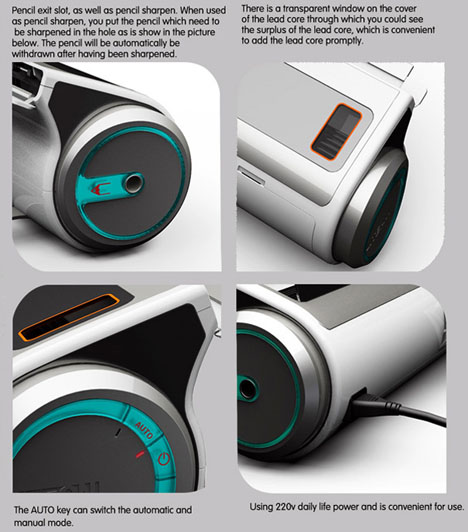Mobile devices and smartphones are still new ideas in the tech community. Compared to home computers and laptops, the common mobile smartphone has only been around for a couple of years now. But having quickly grown to popularity, there are more early adopters now than we have ever seen before.
And this leads into an interesting area of discussion on mobile payments online. More specifically how can you be secure when purchasing things on your mobile devices? I want to offer some tips and ideas for going about purchasing anything on your smartphone or tablet PC. Mobile devices can often be less secure than computers within your own home network.
There is also the possibility of running into bugs in the mobile app or website. Security for mobile phones has been advancing tremendously, but has yet to hit a peak. I will be eagerly watching security trends as they unfold over the next few years. But in the meantime here are some tips you can follow to make sure you are protected when purchasing on a mobile platform.
Download Apps From Trustworthy Sources
We could assume this goes without saying, but obviously this is relatable advice. Downloading 3rd party applications from other areas outside the App Store is a very risky decision.
Alternatives like the Cydia App Store do not have the same credibility as Apple or Google. This is much easier using Android; with iOS devices, they are mostly locked to App Store downloads unless jailbroken. You will have to go through quite a bit of work to get alternative apps installed onto your system. But when in doubt, always check your favorite App Store for a native solution created by the company.
One quick example I can think of is Best Buy. The store does have a mobile website which you can access using your mobile browser of choice. But using it you need to transfer data over the Web via browser inputs. Using a native application you are limited to their backend user interface. This is often a more secure method than accessing websites via Mobile Safari.
So if you are ever in the mood to shop on your phone, check out the App Store first and see if you can locate a native app. These are usually more secure and less buggy than mobile websites. Plus you should still have access to all the major shopping products and categories.
Check App Reviews And Ratings
While inside the App Store you shouldn’t just download the first option you see. There can sometimes be other third-party developers who will create apps tied to online stores yet are not exactly affiliated. This is a rare occurrence, but luckily you can quickly determine where all the high-quality trustworthy applications can be found.
In the listings page you will notice each application has a rating mark. The chart ranges from half star all the way up to five full stars. Along with the actual user rating you can also see how many people have voted, along with some of their reviews. The written content is often much more helpful than a star rating because you can get real human feedback. Don’t be afraid of checking the app reviews before downloading and possibly purchasing items through their software.
Protect Your Mobile Devices With Passwords
Some people feel really uncomfortable setting up passwords to lock their phone or tablet. If you are somebody who is forgetful then this may not be a great solution. And of course this will not protect much against somebody snooping over data packets in your Wi-Fi Internet.
However the best protection against somebody gaining access to your accounts from your phone is by using a device password. This means whenever somebody goes to open your iPhone or Android it will require a passcode before unlocking. This is a great solution if you are often out moving around and traveling with your devices.
Accidents do happen and people lose their phones all the time. It would be an even more dangerous situation if your phone had direct access into your bank accounts and online shopping carts. It may be possible to lock specific applications as well, but this may prove more convoluted than useful.
Send Data Over A Secure Internet Connection
I cannot stress enough that whenever you are purchasing things or transferring money online,always do this over a secure connection. One of the easiest ways for people to get your password(s) is by accessing your device IP on a public Wi-Fi network.
I can’t speak about the 3G network because I have never looked into how data is passed from device to server. I would imagine it is encrypted in a similar way, but I can say for certain that a 256-bit WEP wi-fi connection would be more secure. I would imagine that any data transfer out of a private network is going to be slightly less guarded, especially with many various devices all accessing the same bandwidth.
Mobile hotspots are not the gathering place for hackers or identity thieves. It just so happens that transferring your personal information over a public Internet connection is just a bad idea. Perhaps risking a login to your Facebook or Twitter is much more realistic. If anyone gains access to your social profiles, you will not be risking the loss of your personal finances & assets!
Check Mobile Websites For HTTPS
I will admit there are some situations where you simply must go through the mobile web interface. When you have no apps to download in the App Store and cannot wait until you have access to a computer then mobile shopping is the way to go.
When you first load up any website in your browser always check for the secure HTTPS connection. This will guarantee that any data passed between your device and the server is only shared between those two machines. You can get into a lot of risky business by sending your personal information over the Internet via unsecured HTTP. Some information is okay, but not credit cards or bank accounts. Definitely double check for that padlock icon before dropping items into your shopping cart.
And in some instances it may honestly be worth waiting until you can get onto a laptop or desktop computer. Many e-commerce websites are not created solely for mobile support. It is always an option, but why not wait and make sure your order is placed correctly?
Watch Statements And Report Suspicious Activity
If you are ever in doubt about your accounts being compromised do not hesitate in taking action. I have preemptively changed my passwords many times over when I feel it’s a good idea. Often times your gut instinct may indeed be correct without having any solid evidence.
Also be sure to log into your online banking accounts every so often and make sure there is no suspicious activity. Check for any money transfers or withdrawals which you didn’t authorize. These situations do not usually happen just solely by using mobile banking. However it doesn’t hurt the situation to be extra cautious when handling your money online.
Mobile Apps Worth Trying
I want to offer a small collection of native mobile applications you could try out related to some popular online vendors. Many of these apps have both Android and iOS support for the majority of smartphone users. The best way to determine quality is to check reviews and see what kind of experiences other users are having.
Some of the applications are related to mobile banking and money payments, while others are e-commerce stores and web shops. Before downloading anything be sure to check the developer and see if they are a trustworthy name. You can match the developer’s name with the company name and figure out the relation between them.
Final Thoughts
I know these are a lot of ideas to consider and they may not apply to everyone. But you really have to spend time planning your own needs for making payments online. As we have illustrated earlier there are plenty of native mobile applications put out by trustworthy companies which you can use from any mobile device.
If your money is safe enough in a digital online account then transferring onto mobile is just a matter of semantics. I do hope this article can offer more than just a few tidbits of knowledge here and there. Security is a topic I am passionate towards and always enjoy hearing related stories. If you have other ideas or questions about making secure mobile payments feel free to share with us in the discussion area.







 Since Panjiva doesn’t have exact shape and size of the shipments, the best company can do is guess as to what are these mysterious set-top boxes. It could be the newer version of the current Apple TV product, the much speculated-about television product or something brand new we don’t know anything about.
Since Panjiva doesn’t have exact shape and size of the shipments, the best company can do is guess as to what are these mysterious set-top boxes. It could be the newer version of the current Apple TV product, the much speculated-about television product or something brand new we don’t know anything about.






































